THIS ARTICLE IS A REPRINT - VIEW THE ORIGINAL ARTICLE AT: https://www.policeone.com/police-history/articles/241403006-History-and-use-of-the-billy-club/
PoliceOne.com | Updated Nov 16, 2016 By PoliceOne Staff
EARLY POLICE FORCES USED THE BILLY CLUB AS A TOOL AND A SYMBOL OF AUTHORITY
Billy clubs were the first less-lethal weapon used by police officers to subdue criminals and maintain public order. Known by many names, the police officer’s club, mace, truncheon, nightstick, or baton is as old as the profession itself. Though the names and techniques have changed, the tool itself has not, and is now a symbol of police officers worldwide.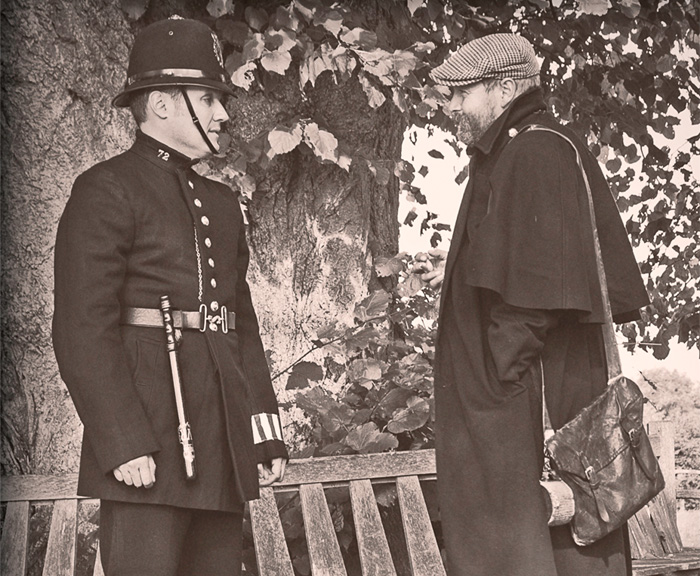
British police constable wearing a decorated billy club. (Photo: Anthony McCallum)
The billy club in early police history London’s first police department was founded in 1829 by Prime Minister Sir Robert Peel. His concept of a modern police force was based on the principle of “policing by consent:” earning the respect and compliance of the public instead of ruling by intimidation. The new police force would be unarmed except for the billy club, the signature tool of early police officers. Billy clubs differed in length depending on the officer’s preferences and physical size. Historically, they ranged from about about 14 inches in length for close-quarters use, to over 36 inches for use in riots or by officers on horseback.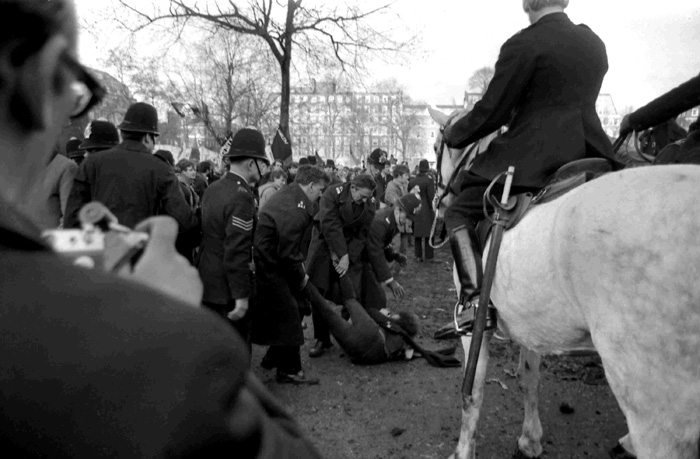
A mounted officer carries a 36-inch club to a Vietnam War protest, 1968. (AP Photo)
Because of the billy club’s versatility and the police culture established by Robert Peel, British law enforcement’s use of firearms was very limited until the mid-1990’s. Billy clubs as a symbol of police worldwide Between the different sizes and personal ornamentation, many Victorian era billy clubs are unique items. The staffs were ornately decorated with marks such as a royal crown and scepter, various coats of arms, and sometimes, the initials of the billy club’s owner.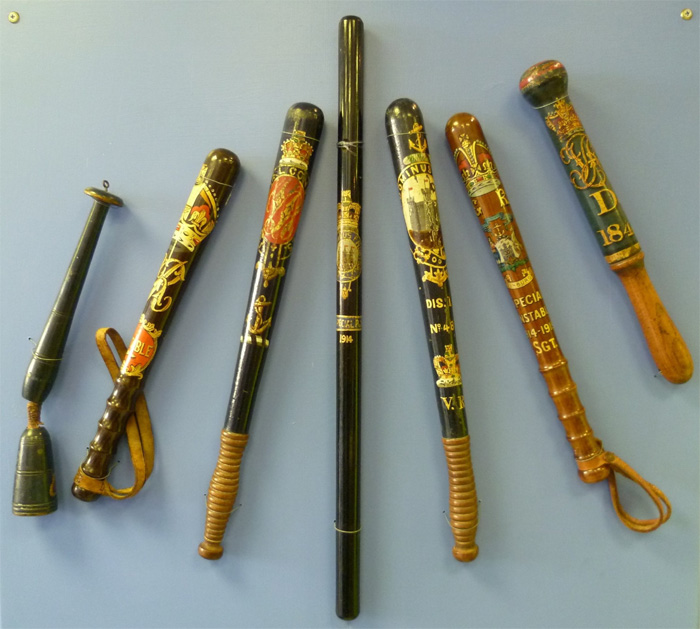
A collection of decorated 19th century billy clubs. (Photo: Kim Traynor)
The tradition of decorating a billy club, truncheon, or baton was carried over to the United States. In New York, batons made of finely carved woods and ivory were given to officers by police personnel under their jurisdiction. These particular items are largely ceremonial and not used in the field.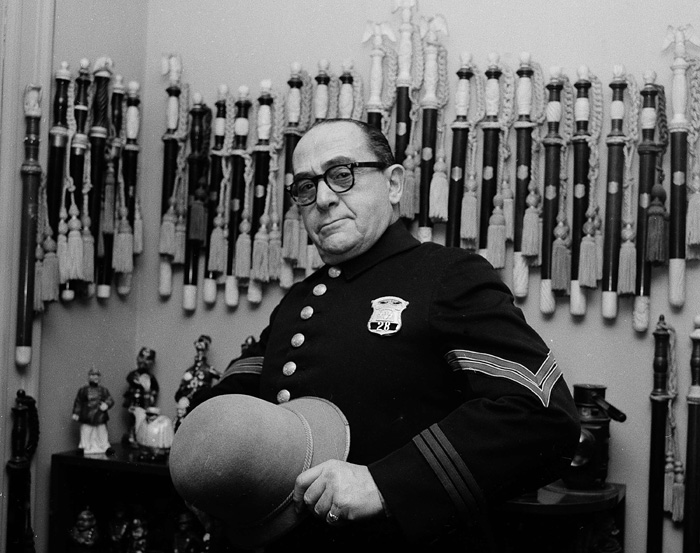
A collection of fine clubs presented to NYPD officers. (AP Photo)
In Baltimore, a large club called the espantoon became known as an officer’s “Badge of Authority” sometime in the 19th century. Police officers from the area were known for twirling their trademark batons, which became a unique piece of the department’s culture. Though espantoons were banned in 1994 by police commissioner Thomas C. Frazier for being “too intimidating,” they were brought back by popular demand in 2000 following his replacement. Billy clubs as a less-lethal option The first London police officers were issued billy clubs as a tool for self-defense, but these tools can still cause great physical harm in the hands of a trained officer—especially when striking vulnerable areas such as the head, spine, or groin. A baton has numerous advantages as a striking weapon. Most notably, it preserves the hands which can be easily injured while boxing, and can be used defensively to protect against blows from blunt and sharp objects. If they must strike with their batons, today’s officers are taught to disable offenders by targeting nerve clusters and bony prominences in the limbs and torso rather than hitting to cause a concussion.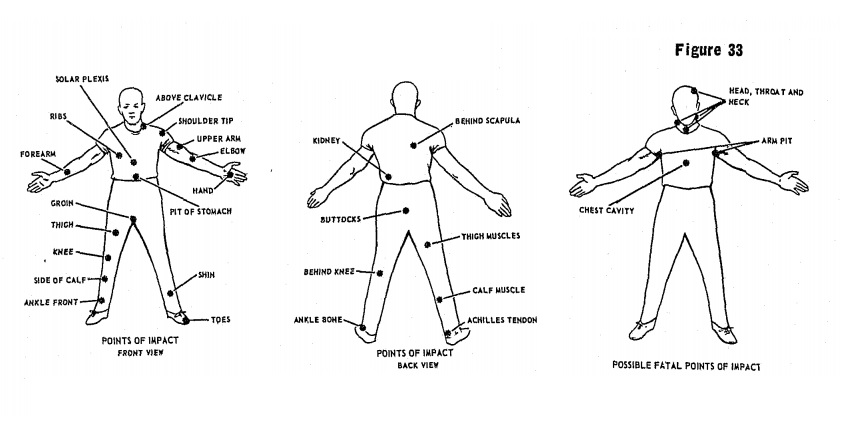
Points of impact from a mid-20th century FBI training manual. (Photo: Technique and Use of the Police Baton)
An FBI tactical manual called “Technique and Use of the Police Baton” also contains several instructions on how to use a straight baton to restrain a suspect, force them to move in a certain direction (“come alongs”), or manipulate a resisting offender’s limbs.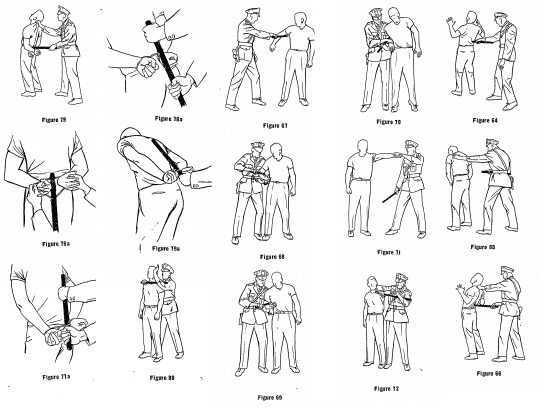 Even if officers never use a billy club as a tool of force, there are other applications for the baton. Clubs have been used to break windows and intimidate (but not harm) belligerent folks into compliance. Billy clubs were even used as a means of communication: before they had radios, Baltimore police officers used to knock their espantoon clubs along curbs and pipes to alert other officers. Even the way an officer carries their baton on their person can be used to send messages to a hostile person or crowd.
Billy clubs today
After incidents such as the beating of Rodney King, the use of straight clubs declined out of public image concerns. The availability of TASERs, pepper spray, and collapsible batons along with a greater concern for officer safety have also contributed to the reduced use of the traditional straight club.
Billy clubs might take more training to use effectively and reasonably than other less-lethal weapons, but the officers who possess that knowledge may have greater control over how much force they apply. It’s a fading art, but even so, billy clubs are a part of police history and a useful tool, versatile tool for those willing to learn.
Even if officers never use a billy club as a tool of force, there are other applications for the baton. Clubs have been used to break windows and intimidate (but not harm) belligerent folks into compliance. Billy clubs were even used as a means of communication: before they had radios, Baltimore police officers used to knock their espantoon clubs along curbs and pipes to alert other officers. Even the way an officer carries their baton on their person can be used to send messages to a hostile person or crowd.
Billy clubs today
After incidents such as the beating of Rodney King, the use of straight clubs declined out of public image concerns. The availability of TASERs, pepper spray, and collapsible batons along with a greater concern for officer safety have also contributed to the reduced use of the traditional straight club.
Billy clubs might take more training to use effectively and reasonably than other less-lethal weapons, but the officers who possess that knowledge may have greater control over how much force they apply. It’s a fading art, but even so, billy clubs are a part of police history and a useful tool, versatile tool for those willing to learn.

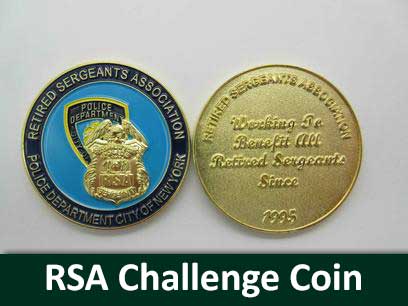

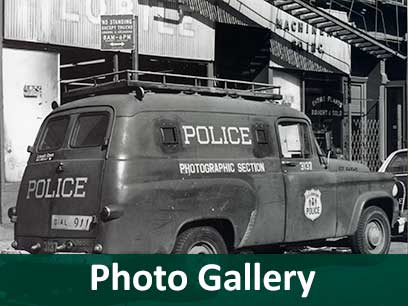
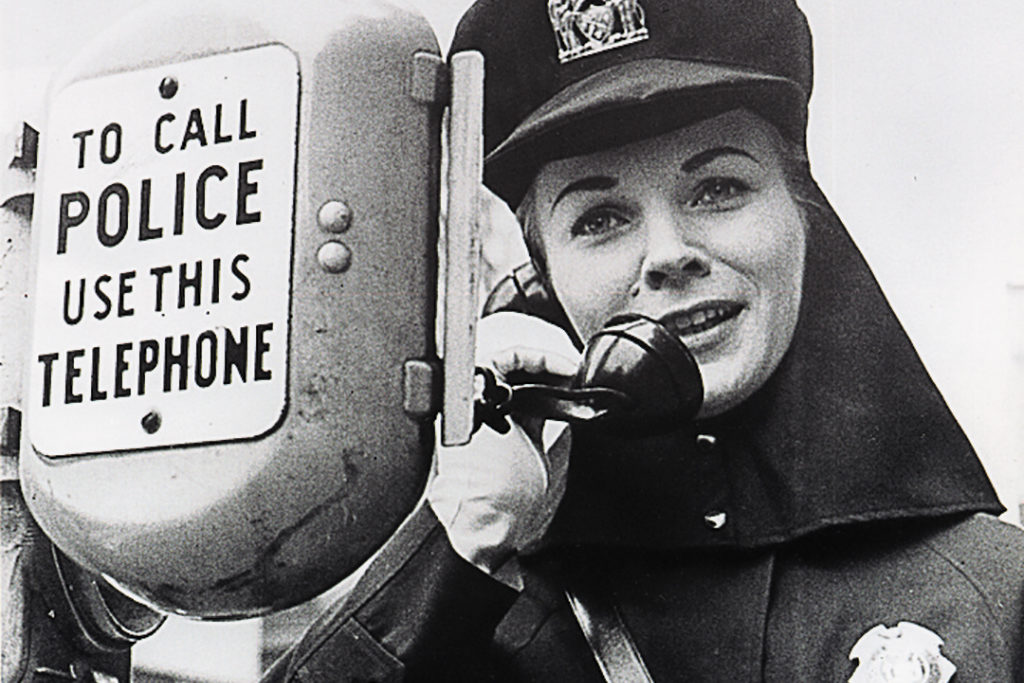
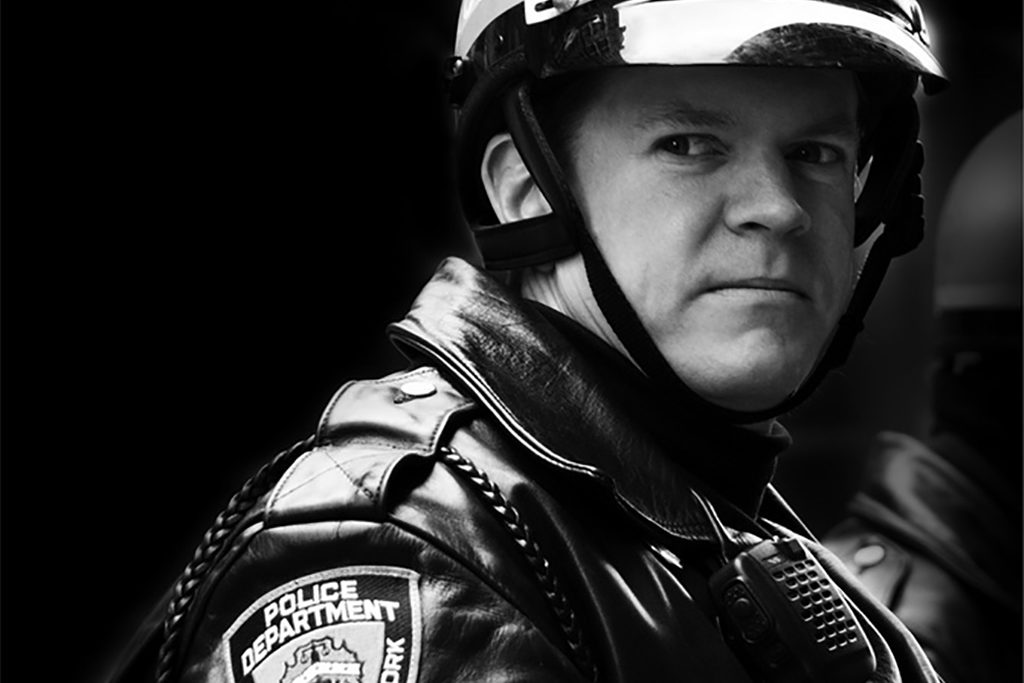

Recent Comments